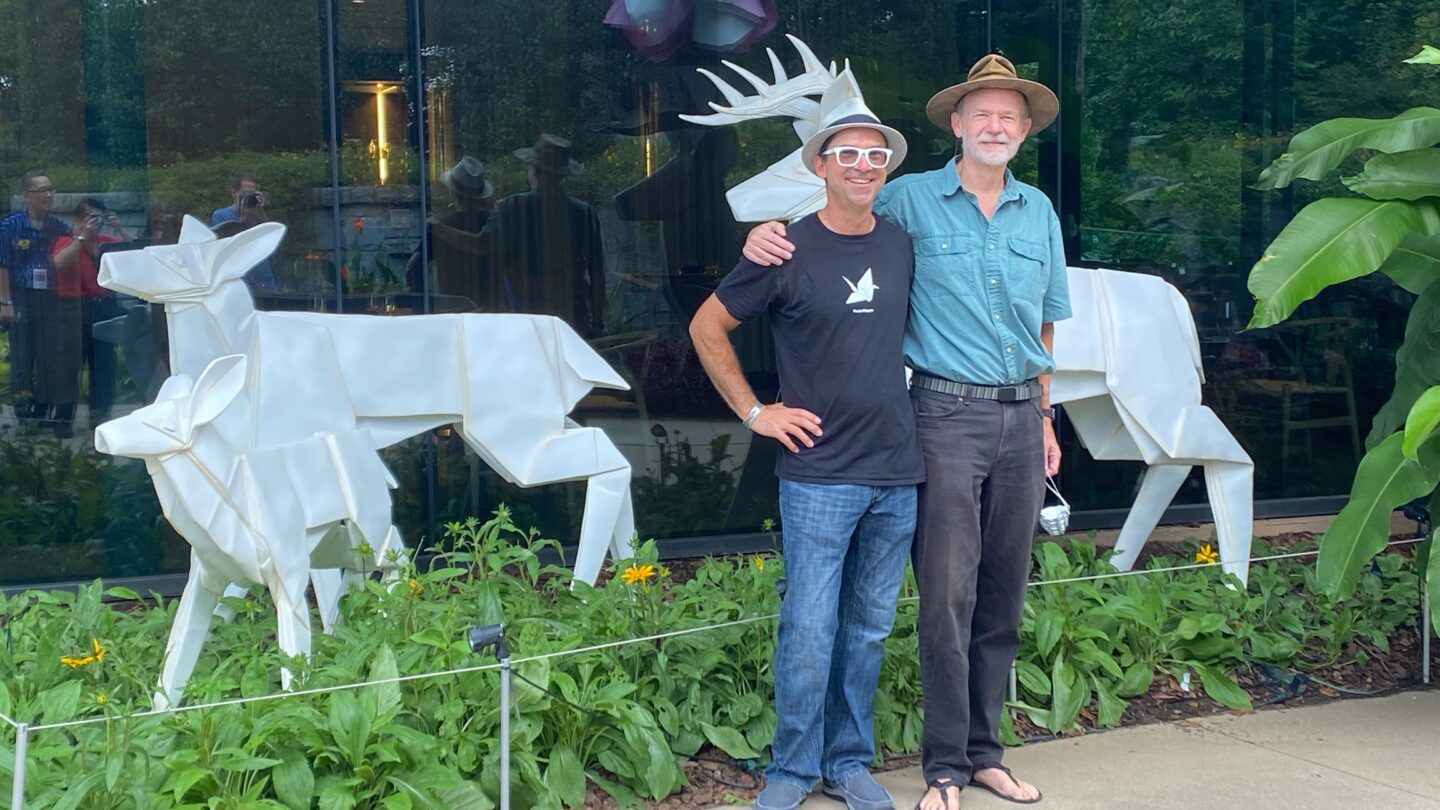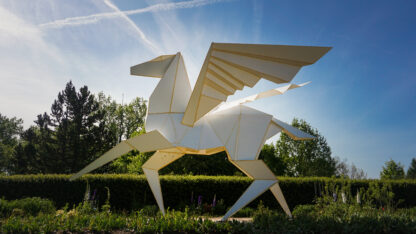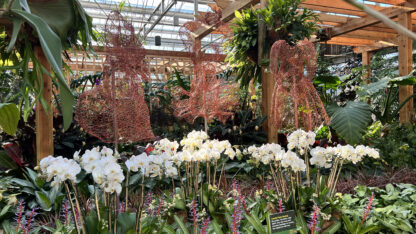The ancient tradition of origami represents the folding together of art, mathematics and science. Robert J. Lang is among the world’s leading masters of the art form.
The distinguished physicist and engineer has constructed some of the most complex and intricate origami designs ever created. Lang is also a collaborator with the renowned sculptor Kevin Box, and their work together is on view in the exhibition “Origami in the Garden” at the Atlanta Botanical Garden through Oct. 16.
Lang joined “City Lights” host Lois Reitzes via Zoom to talk about his remarkable life discovering the secrets of origami.
Interview highlights follow below.
How a childhood hobby became a lifelong passion and career:
“It was a way to create neat and beautiful objects from almost nothing. I didn’t need anything other than a sheet of paper, and so many crafts, you need materials and tools. You need paints and glue and all that sort of thing, and consumables, but paper was free and boundless. So I could entertain myself for a really long time,” said Lang.
“I was good at math in high school, and enjoyed math, and that led me to go into a scientific career doing engineering and then applied physics. I studied lasers, and in particular, I focused on theoretical analysis – so, using mathematics to learn how to accomplish goals that I had in the design of lasers, making them higher-powered or brighter, other nice properties,” Lang recounted. “Origami had been my hobby all along, and so I had developed a pretty good intuitive understanding of origami, but it felt like origami was subject to the same sorts of laws that that lasers were… and that if I could describe those laws explicitly in mathematical terms, then I could use the tools of math to help me accomplish the artistic things I wanted to accomplish with origami. And that turned out to succeed beyond my wildest dreams.”
On the Lang and Box collaborative metal origami sculptures at Atlanta Botanical Garden:
“The thing I think that makes the collaboration work is, first, that we bring something complimentary to the collaboration. We are designing origami patterns, and Kevin has both a vision of the metal artwork, but also the artistic skill to figure out how to create in metal something that still speaks like paper,” said Lang.
“The techniques that are used to create the metal sculptures, casting and fabrication… involves cutting and welding and so forth. And so you might think that’s getting far from the folding of paper, but it’s actually possible to fold thin sheet metal into origami shapes. And I’ve done some of that. But when you’re actually folding metal, there’s a compromise in the rendering, so that what you end up with actually looks less like paper origami than what is the result of these casting and fabrication processes. So the paradox is, even though we’re using techniques that seem far removed from paper, ultimately it has greater fidelity to the concept of the single uncut sheet paper origami than if we were actually trying to fold metal.”
Expert folding mechanics in rocket science, medicine and airbag design:
“One of the other nice areas of applications of origami and engineering is in medicine, and it’s because the problem is similar to the one in space, that the thing you want to make is small for the journey, because in space, you need to fit it into a rocket. In medicine, you want it to go into the body through as small a hole as possible, and then you want it to expand to produce some sort of functionality,” Lang explained. “One of the things I worked on probably 10, 15 years ago was a heart implant…. The treatment amounted to a bag that wraps around an ailing heart to provide some support. But it needed to fit into a little injector so that it could be inserted between the ribs; you didn’t have to do open heart surgery. And so I did some consultation with that company on developing folding patterns that would collapse that bag into a small shape so it would fit inside its injector too.”
“I also did some work on airbag design and it was interesting. The work I did was purely mathematical. It wasn’t figuring out how to fold a particular airbag in a particular way, but rather figuring out what the mathematics was that could be used in a computer algorithm to do the folding of airbags. The interesting thing about that was that the math that was needed to model the flattening of an airbag in a computer program… was the same as the math needed to design complicated origami insects, which was a specialty of mine,” Lang said. “I was just trying to make better artwork, but math doesn’t know what it’s going to be used for, and so the same math very often does turn out down the road to have real life practical applications.”
Visitors to the Atlanta Botanical Garden can still see Robert J. Lang’s contributions to the “Origami in the Garden” sculpture collection in person through Oct. 16. More information is available at https://atlantabg.org/origami-in-the-garden/










